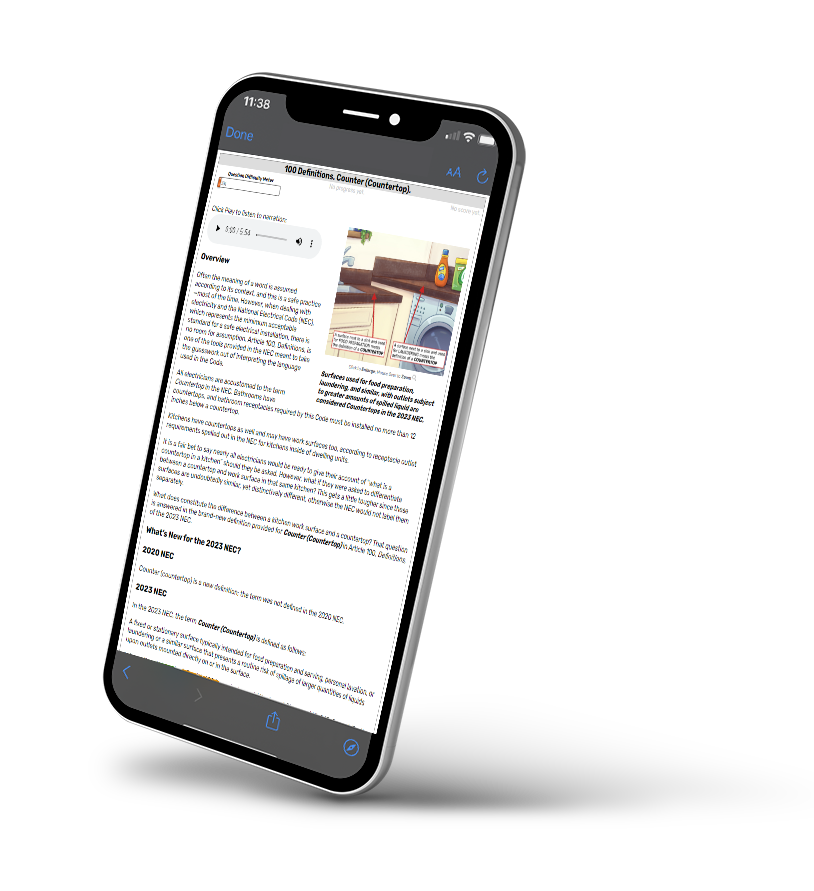Field Labeled & Field Evaluation Body (FEB)

By: Daryl Wolfram | Aug 29, 2019
Two new terms found in Article 100, and a clarified evaluation-practice established for the 2017 NEC code-cycle.
Electrical equipment is generally approved by a testing laboratory before being shipped by a manufacturer. However, sometimes electricians may need to install specialized gear that has not yet been formally certified. When field certification is necessary due to a lack of a UL (or other approved laboratory) Listing, electricians are then required to contact a Field Evaluation Body (FEB) to receive an approval label. Fortunately, updates and new terms in the 2017 NFPA 70 National Electrical Code (NEC) help clarify what should be done when items need to be field labeled by a Field Evaluation Body (FEB).
What is an FEB?
An FEB, or Field Evaluation Body, is defined by Article 100 in the 2017 NEC as:
“An organization or part of an organization that performs field evaluations of electrical or other equipment.”
Typically, electrical equipment is certified in laboratory environments by a Nationally Recognized Testing Laboratory (NRTL), such as Underwriters Laboratories, Inc. (UL). When electrical gear has not already been pre-tested and approved by UL or another NRTL, the NEC requires a field evaluation by an FEB. Field Evaluation Bodies have their own code requirements (NFPA 790 and NFPA 791) they must follow. The FEB will verify the equipment is ready and safe for operation.
An FEB is not the same as an Authority Having Jurisdiction (AHJ). Although both FEBs and AHJs will make field inspections, the FEB will focus on making sure specific non-listed equipment is safe, while the AHJ will make sure all installations and materials are up to NEC and local standards. Since the AHJ is responsible to inspect and accept the listing or field labeling, electricians should speak with their local AHJ before contacting an FEB.
Once contacted, an FEB will often schedule an appointment for one of their qualified engineers to do a field inspection of the equipment. If any part of the equipment needs improvement, the FEB will make recommendations and may come back on a separate day to re-inspect the equipment once the modifications have been made. If the FEB is satisfied the equipment meets their standards, they will complete a field evaluation report and will provide a field label.
What does it mean to be field labeled?
According to Article 100 in the 2017 NEC, Field Labeled is defined as:
“Equipment or materials to which has been attached a label, symbol, or other identifying mark of an FEB indicating the equipment or materials were evaluated and found to comply with requirements as described in an accompanying field evaluation report.”
Once an FEB completes the field evaluation and certifies the equipment is safe to use, a label will be applied proving the equipment has been checked and approved. The field labeling must be done by an FEB and not the electrical contractor. The NEC definitions for labeled and listed are different, and the differences are important. Labeled means a label, symbol, or other identifying mark has been attached to the equipment or materials to indicate compliance with appropriate standards. Listed (such as UL Listed) means that the equipment is included in a list published by an organization that is acceptable to the AHJ. When equipment is field labeled, a label or other symbol is placed on the equipment to indicate that one piece of equipment is safe to use as evaluated by the FEB. However, the equipment is not field listed, since field verified equipment will not appear in any publications indicating it is safe to use in similar situations in the future. Therefore, the same types of equipment in the same situations will still need to be inspected by an FEB, even when field approval has been given in the past to similar equipment in similar situations.
Although each FEB may have a different form they use for their field evaluations, certain format and content requirements are listed in Chapter 11, Section 5 of NFPA 790. The report should be recorded and presented in a way that interested parties, such as the AHJ, will be able to easily review the results.
Where may FEBs and field labeled equipment be required?
FEBs can provide field labels in locations where typical listings are not provided, but where there are listing or field labeling requirements in the NEC. This can include standard service equipment, as well as newer technologies such as solar panels and wind turbines.
A good example of field labeling is in NEC Section 691.5. Since large-scale photovoltaic (PV) electric power production facilities are relatively new and often have differing equipment requirements, electricians may need to create or order new equipment. If the new equipment is not listed, the electrician will need to contact an FEB to complete a field evaluation and provide a field label in order for the equipment to be approved by the AHJ.
Other code articles involving field labeling include:
- Fuel Cell Systems 692.6
- Interactive Inverters 705.6
- Microgrid Interconnect Devices 705.170
- Photovoltaic Equipment 690.4(B), 690.12(B), 691.5(2)
- Service Equipment 230.66
- Stand Alone Systems 710.6
- Wind Electric Systems 694.7(B), 694.7(F)
Where can I find additional information about FEBs, listing, and field labeled equipment requirements?
In order to save yourself time and money, contacting your local AHJ is always a great first step. Since AHJ inspectors will have the final say on the qualifications of FEBs, their input in the early planning stages of your project is essential, since their local rules and regulations may be more than what is required by the NEC.
Other sources of information include:
- NFPA 790: Standard for Competency of Third-Party Field Evaluation Bodies
- NFPA 791: Recommended Practice and Procedures for Unlabeled Electrical Equipment Evaluation
- United States Department of Labor, Occupational Safety and Health Administration website https://www.osha.gov/dts/otpca/nrtl/nrtllist.html.
Click the link above for a list of current NTRLs.
With advanced planning and knowledge of FEBs and field labeling, you may even be able to get an item field labeled before it leaves the factory. Such foresight can help save installation time and avoid costly delays.
Pictures provided by pexels.com and by skeeze from Pixabay.

